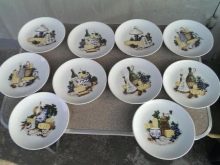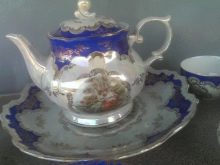Services of the times of the USSR
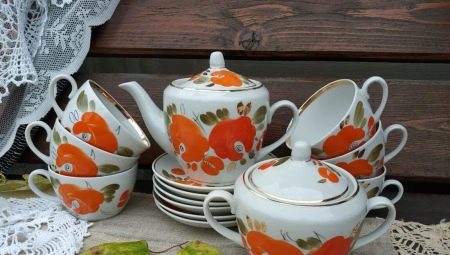
Sets from the times of the USSR are in constant demand among domestic and foreign collectors. High-quality, thin-walled, with a beautiful ornament, often they really are a real work of art. In the old days, such products were available in almost every family. They stood behind the glass of the sideboards and were more of a status decoration than dishes. It is worth remembering only the "Rybka" service, which most Soviet people had at that time. Many examples of such dishes have survived to this day. But not all of its types are of the same value. The features and types of such products will be discussed in this article.
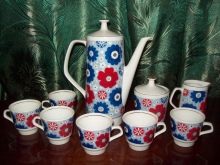
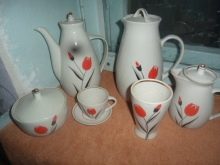
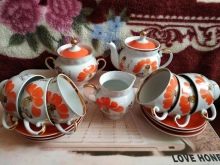
Peculiarities
The porcelain of the USSR is a real personification of the art of the Soviet period, promoting the goals and values of society. Soviet sets were distinguished by their excellent workmanship, which can be judged even today.
They are characterized by:
-
strength;
-
durability;
-
resistance to temperature extremes.
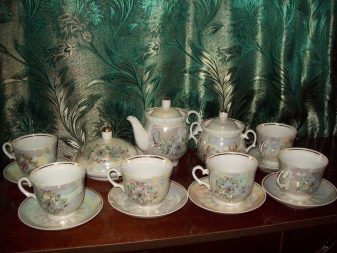
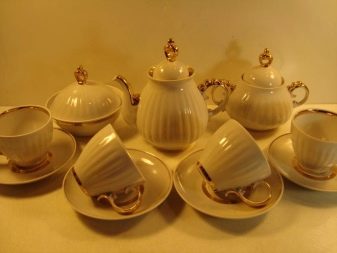
The peculiarity of the products consisted in the use of underglaze and overglaze paint of different colors during the processing. They began to be used in porcelain factories in the 30s of the last century.
The color of the model depended on the type of product:
-
the first grade was red;
-
the second is blue;
-
the third is green.
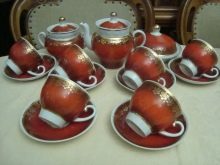
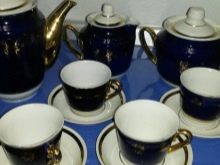
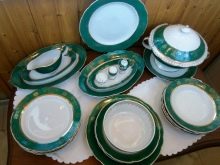
The most expensive products are those made before 1960. Valuable models should not have cracks, chips, and not be tinted. Of particular interest to collectors is propaganda porcelain with corresponding slogans. Such products were made in small batches, and single copies have survived to this day.
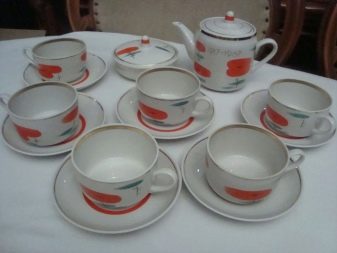
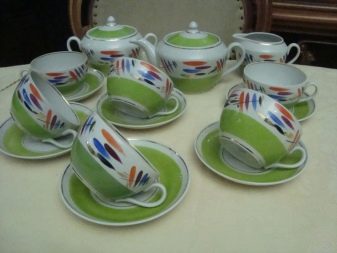
Views
Services of the times of the USSR were very diverse. The main types should be highlighted.
-
Table service. A complete set of tea, coffee and tableware was called a table service. In Soviet times, these dining items were the pride of any family. The service served not only as decoration, but also as a demonstration of wealth in the house.
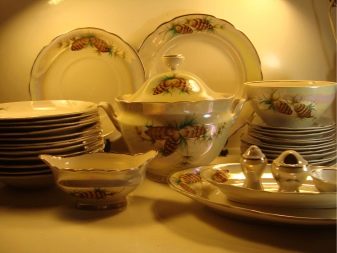
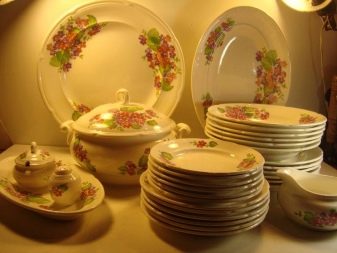
- Tea-set. Such products differed in color and pattern. One could see both a simple pattern in polka dots and a service with intricate patterns, small details or geometric grids.
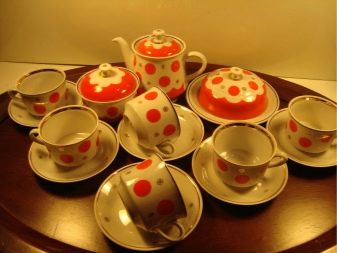
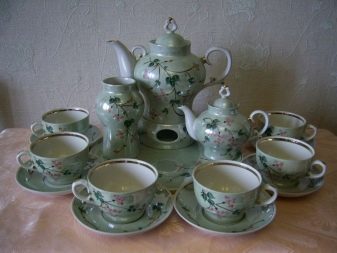
- Damask... Expensive dishes on the table were complemented by expensive damask. In such a porcelain vessel, strong drinks were put on the festive table. Soviet masters knew how to give various forms to damask, they painted them with high quality. The hostesses only needed to choose a product that would go well with the items on the table.
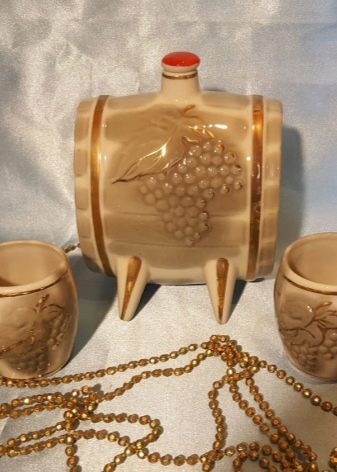
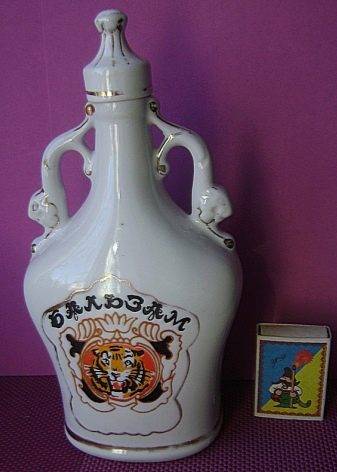
- Ashtray... To complement the festive decoration of the table, a corresponding porcelain ashtray was placed along with a special service. Often such an object had an unusual shape and was painted with high quality, so now it also has a high cost.
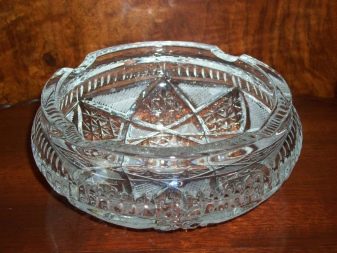
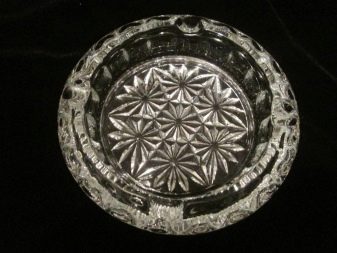
The services of the Soviet period were qualitatively made and painted, distinguished by their elegance and unique delicate beauty. These dishes were carefully stored, usually used for the holidays.
Manufacturers
Most of the famous porcelain factories were founded before the revolution. Many of them continued to work in subsequent years, and some did not stop production even during the war years. This is exactly what the Leningrad or Lomonosov Porcelain Factory was. So, in 1944, in the besieged city was made famous service of the artist Anna Yatskevich with "cobalt net". Interestingly, the original drawing was gold, and only after a while it turned blue.

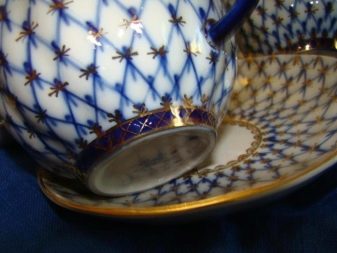
Several factories were considered real giants in the Soviet Union.
-
The plant in Verbilki. The company was founded in 1766. After the revolution, it was renamed into the Dmitrov Porcelain Factory. Its products are of the highest quality.
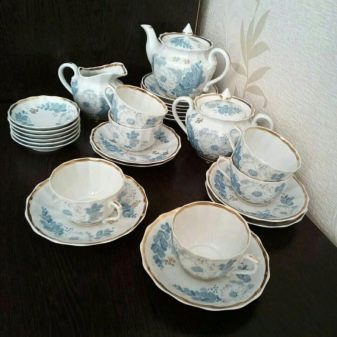
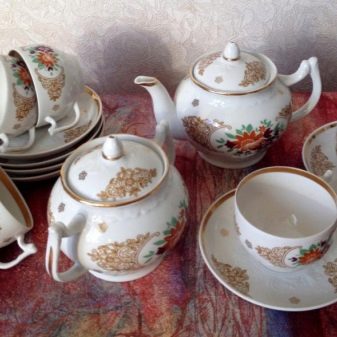
- Gzhel... The factory was famous for its porcelain products, using red overglaze enamel. Iron oxide was sometimes used to give the products a grayish-green hue. But the world famous is cobalt porcelain, which is called "Gzhel".

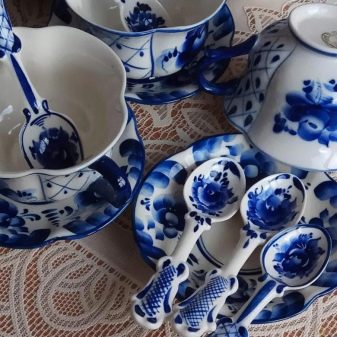
- Riga plant. This enterprise was famous for the production of porcelain and faience products and majolica. Porcelain dishes, figurines, earthenware sets from this factory were usually exported.
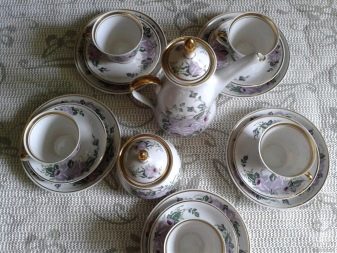
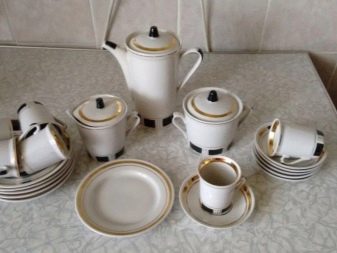
- Konakovsky Porcelain Factory. In the 1920s, it was renamed the Kalinin faience factory, abbreviated as ZIK. The famous oil cans and salad bowls brought glory to the company. At international exhibitions, the products of this plant have repeatedly received gold medals.
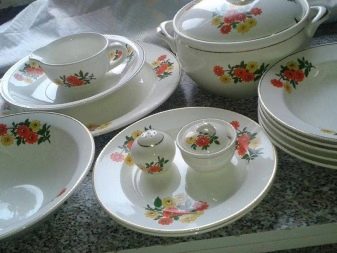
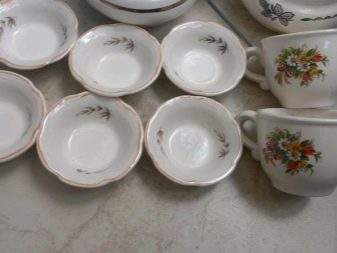
In addition to products that belonged to masterpieces and were marked with the inscription "OUTSIDE GR", many goods were exported, they had stamp Made in USSR.
Soviet porcelain is highly prized by collectors. To avoid buying a counterfeit product, you need to make sure that there is a stamp on the product.
